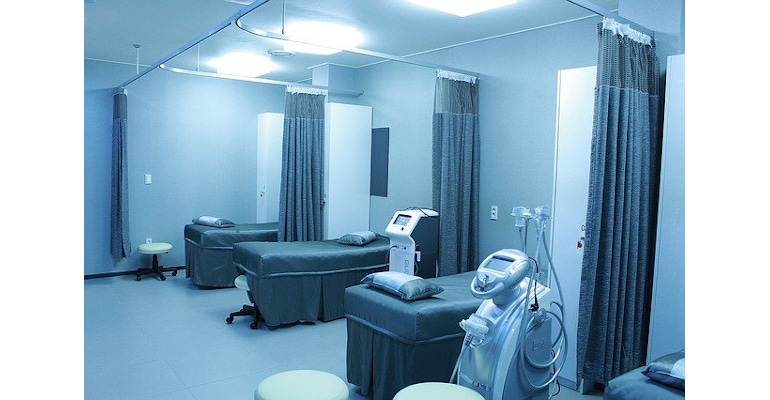Clinical asset management could save money, thwart cyberattacks, and help during a crisis if done right.

Clinical asset management in the healthcare industry now extends far beyond logging inventory. Next-generation technologies track, manage, and maintain clinical equipment in real-time to provide a comprehensive, ongoing assessment. These sophisticated software tools provide a holistic approach to clinical asset management: the quantity of medical equipment a healthcare facility has, how much it’s used, its current condition, and what risks it presents—whether because of an FDA recall or as a network vulnerability for cybercriminals to exploit.
Dozens of data points, such as manufacturing date, service history, cybersecurity information, OEM support, and downtime, do much more than provide benchmarks in the present. They can provide valuable insight if collected and evaluated in the right way. The resulting assessments can forecast critical needs, particularly during a pandemic, and guide financial decisions on procurement and reallocation. They also can help improve clinician satisfaction and patient care.
Clinical Asset Management Can Help Overcome Supply Shortages
The ventilator shortage during the outbreak of the COVID-19 pandemic underscored just how critical the management of clinical assets is to healthcare. It also provided beneficial lessons going forward.
An accurate and detailed equipment inventory updated frequently is key to overcoming supply shortages, according to an April 2020 article in Harvard Business Review. Getting ahead of supply shortages requires forecasting the next bottleneck in the system, said the business administration and health professionals who wrote the article, and forecasting requires detailed information about available inventory. Clinical asset management (CAM) software provides those details.
Pooling to make equipment such as ventilators available to other hospitals in the network also requires details on what equipment is available and where it is. “Good information cannot magically make shortages of physical materials go away, but bad information can certainly make shortages worse,” the authors wrote. “Lack of information creates uncertainty, and uncertainty can lead to ‘just-in-case’ hoarding.”
Amid a public health crisis, CAM solutions afford the flexibility to meet the challenge head-on. During the pandemic, each piece of equipment used in the treatment of COVID-19 can be flagged with a critical response indicator to help prioritize needs for that equipment over others. COVID-19 case trends can be tracked geographically against repairs and inventories to aid planning and preparation. Parts needed for repairs can more quickly be identified, and that knowledge can expedite the search for alternative sources for parts during a shortage.
Smarter, predictive inventory management through CAM tools can help alleviate the troubles caused by supply shortages during a health crisis, which helps patients and aids staff. CAM software can help solve these and other challenges hospitals face—even challenges of a more devious nature.
How Healthcare Providers Can Improve Cybersecurity
The risk to hospitals from cybercrime cannot be overstated. Nearly seven out of 10 medical devices are projected to be connected to an online network in the next few years, according to a 2018 report by Deloitte Centre for Health Solutions.
Other research published last September in BMC Medical Informatics and Decision Making noted that many networked medical devices contain critical security vulnerabilities. More devices going online, of course, presents greater risk. “We detected a strong correlation between the degree of connectivity and the likelihood of being attacked,” the authors wrote. The researchers found many networked medical devices contained critical security vulnerabilities. “Due to these vulnerable systems in hospital networks, health care is among the most attacked sectors globally,” according to the BMC research article.
The 2017 WannaCry ransomware attack illuminated how dangerous these vulnerabilities can be. In England, for instance, the cyberattack infected more than 1,200 diagnostic devices, prompted the shutdown of other equipment to prevent it from becoming locked-out, too, and forced five emergency departments to direct patients to other medical facilities, according to an investigative report by the UK National Audit Office. Thousands of medical appointments also had to be canceled.
The healthcare industry already struggles with cybersecurity. The industry continues to lead all other sectors in expenses tied to data breaches, according to IBM Security’s 2020 “Cost of a Data Breach Report.” For the 10th consecutive year, healthcare incurred the highest average breach costs: over $7 million in 2020.
Medical Device Security Is Key
Today’s CAM and cybersecurity technologies can flag the availability of software patches for medical devices but also monitor for vulnerabilities and detect suspicious activity. A cybersecurity solution can even provide a cyber risk score for each medical device, giving health system administrators another meaningful factor to consider in cost-benefit analyses.
Similarly, CAM solutions today can flag recall notices for each individual piece of medical equipment. Software-related recalls are increasing because of the rising sophistication of medical device technology.
Inventory reports, cybersecurity assessments and recall notifications are all part of a wider, multipoint analysis CAM solutions can provide.
Proprietary Algorithms, Visual Dashboards, and a Comprehensive Look
With CAM solutions, proprietary algorithms and dashboards help administrators understand, visualize, and assess their equipment needs and troubleshoot problems. Using machine learning, a powerful application of artificial intelligence, the technology can weigh factors such as recalls, cyber risk, OEM support, repair needs, manufacturing date, estimated remaining life, and utilization data to recommend whether a device should be replaced, upgraded, disposed, or reallocated.
Is a device repair prone? Is it even being used? Should it be moved to another hospital? Should it be sold? This continuous monitoring of multiple factors shows not just the status of the equipment now but can predict when a machine will fail before it does so, thus avoiding unplanned and troublesome downtime.
The software provides ongoing inventory management that allows for smarter planning on capital expenditures and reduces operating expenditures. It also can reveal best practices.
Say the infusion pumps on the third floor of a hospital are having fewer issues than the same devices on the fourth floor. Are staff on different floors handling the devices differently? Better monitoring of equipment and mining of best practices can markedly extend the life of existing equipment, freeing up capital to be spent elsewhere or yielding better prices should the equipment be sold.
And yes, CAM tools today can be a godsend for healthcare staff. Nurses no longer have to spend hours out of their busy days hunting down mobile medical equipment. CAM solutions can allow hospitals to establish a process in which equipment is available, sterilized, and stored where nurses know where it is.
Clinical asset management technology today helps avoid supply shortages, lowers the risk of cyberattacks, and allocates valuable dollars where they are needed most. It saves time for healthcare providers and improves patient care.
About the Author(s)
You May Also Like




